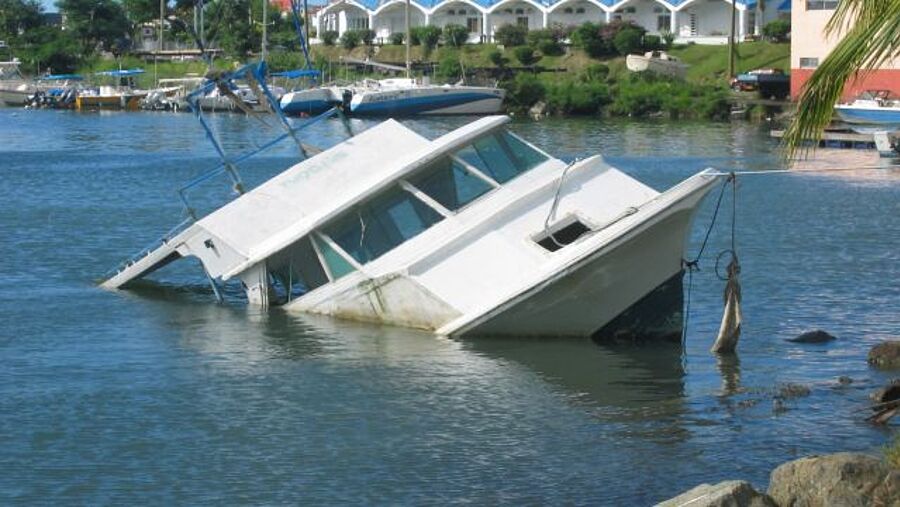
* Pantaenius UK Limited is authorised and regulated by the Financial Conduct Authority (Authorised No.308688)

* Pantaenius UK Limited is authorised and regulated by the Financial Conduct Authority (Authorised No.308688)
Whether as the result of a collision, grounding, material failure, a loose screw or simply your own negligence – if water is coming into the vessel, haste is required. And almost any item can be used to plug the leak, or at least to reduce the amount of water coming in: an oven cloth, a sleeping bag, even a carrot if nothing else is to hand. Because fighting leaks is your top priority.

Anyone who thinks they can use a small electric bilge pump to combat a large ingress of water will quickly fall victim to their own fatal misjudgement. A hole 10 square centimetres in size, 20 centimetres below the water line, will let in around 120 litres of water every minute. That is approximately twelve buckets full. The same hole will let in 220 litres per minute, if it is 80 centimetres below the water line. You cannot fight these quantities of water with a standard manual or electric bilge pump. Another problem: since, for reasons of weight and stability, the batteries are usually stowed as low as possible in the vessel, a short circuit is actually pre-programmed in the event of water ingress, so that electric bilge pumps can no longer be used.
RETROFITTING OF THE BILGE PUMP
Manual bilge pumps does not achieve the capacity required to empty the quantity of water coming in. Engine-linked impeller pumps are therefore an extremely useful addition to your equipment. They are more powerful and, thanks to their link to the main engine, are also permanently ready for use. Unfortunately, these pumps rarely form part of the standard equipment on yachts. It is, however, not too expensive to retrofit them. For just a few hundred euros you can install an additional bilge pump system. Another tip: with a changeover device, the cooling water circuit of the main engine can be adjusted in such a way that the engine does not take the required cooling water from outboard, but from the interior of the vessel. This turns the main engine into an additional bilge pump.
If a water ingress is detected, quick and determined action is required. Immediately activate the bilge pumps and find out where the leak is located as quickly as possible. Then immediately dam the water ingress. This can be done initially with cushions, cloths or tarpaulins. Or you can simply hold your hand against the hole, press your foot against it or sit on it. In the meantime, other crew members will be assembling material to fight the leak. At the same time, you should alert other vessels to the situation, for example by radio, and for safety reasons prepare for a possible evacuation of your own vessel.
The main focus, however, is to plug the leak. Depending on the nature of the hole, it is possible to use softwood plugs, leak stoppers or square timber. Sails or tarpaulins can also be pulled outboard over the hull. Thanks to the water pressure, the hole will then be sealed from the outside by the tarpaulin. This is why motor yachts should always carry a leak sail on board. If this is still not enough, do not hesitate to use fittings such as drawers or wooden cladding to help. It is quite understandable that you would not be too keen to take your furnishings apart, but when your vessel and own life are at stake, anything goes. A hammer and saw should therefore also be part of the standard equipment on board. And if nothing helps, it is better to ground your vessel in a controlled manner than to lose it completely. On the beach it can still be salvaged, and the damage is much less than if it is sunk.
Pantaenius AB is an insurance intermediator and approved by financial authority. For more information please click here.